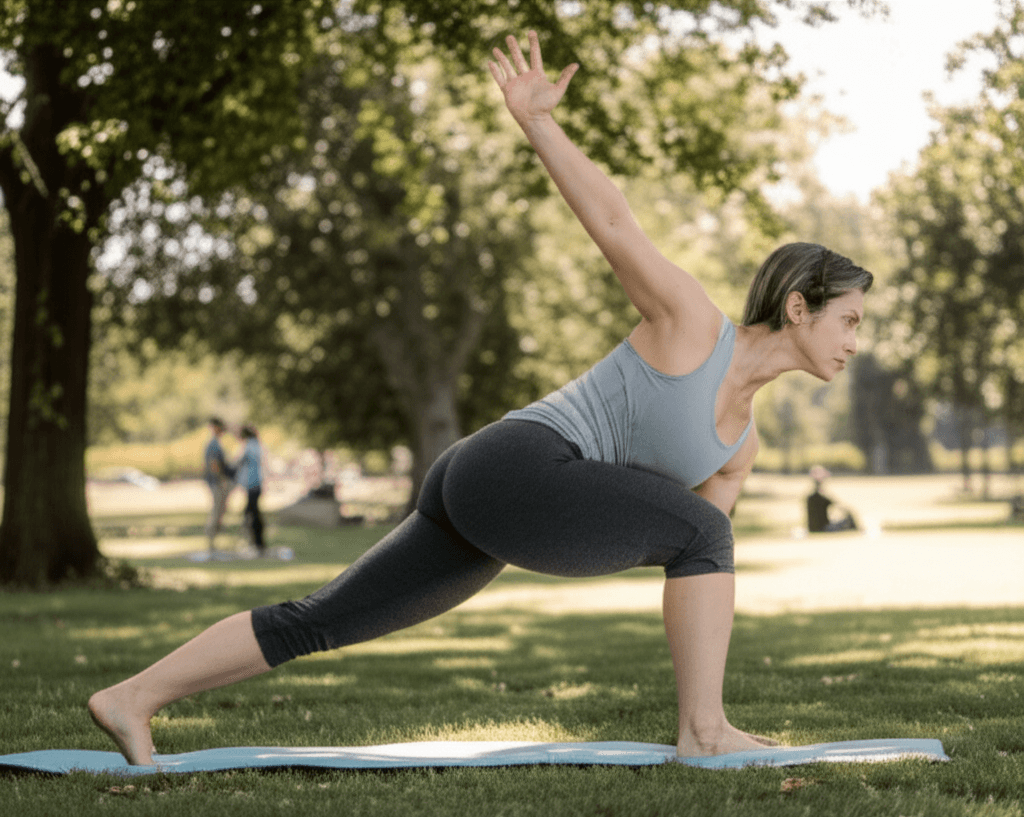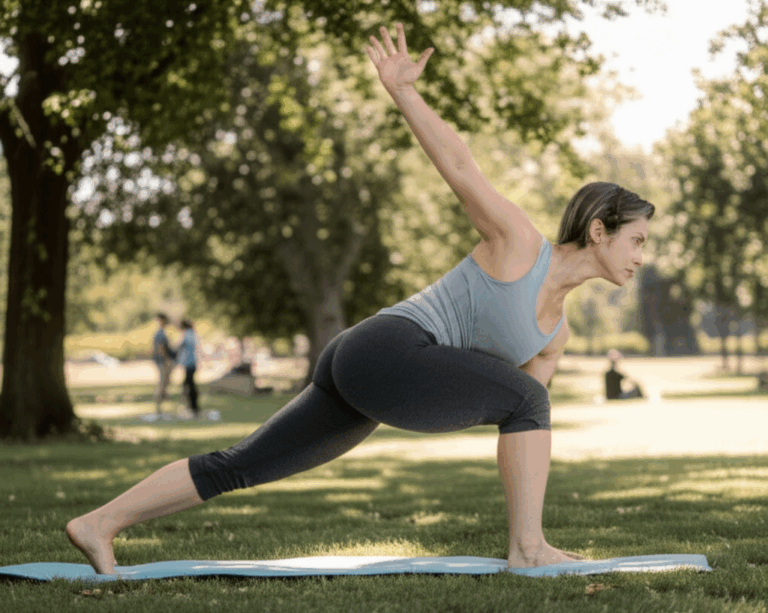For many, the dawn of a new year brings with it a surge of aspiration, particularly around health and fitness. January 1st is universally recognized as a fresh start, a clean slate upon which to inscribe ambitious resolutions for self-improvement. Yet, statistics consistently reveal a disheartening truth: a significant majority of these New Year’s fitness resolutions falter, often by the second week of February, with only a small percentage ultimately achieved by year-end. This annual cycle of hope, effort, and eventual disappointment can be demoralizing.
However, the calendar offers a powerful, often overlooked, second chance: the mid-year mark. Far from being a mere calendar midpoint, July presents a strategic sweet spot for a fitness reset, leveraging behavioral science principles and environmental factors that can make achieving your goals more attainable and sustainable. Instead of waiting for another January, embracing July as the “new January” for your fitness aspirations can unlock renewed motivation and more meaningful progress.

The Allure and Pitfalls of January Resolutions
The tradition of New Year‘s resolutions is deeply ingrained, fueled by the psychological concept of the “fresh start effect.” This phenomenon suggests that individuals are more motivated to pursue goals and initiate positive changes following “temporal landmarks” – points in time that feel like new beginnings, such as the start of a new year, month, or week, or even birthdays. January 1st, as a universal and significant temporal landmark, inherently creates a sense of psychological separation from past failures, fostering an optimistic outlook and renewed commitment to self-improvement.
The “Fresh Start” Myth and Reality
While the fresh start effect provides an initial boost, the reality of January resolutions often falls short. People may be more inclined to set new intentions at the start of a new year, but the success rate is remarkably low. Approximately 80% of New Year’s resolutions fail by the second week of February. This isn’t necessarily a reflection of a lack of willpower, but rather the challenging nature of long-term goal achievement and the common pitfalls associated with how resolutions are typically made.
Overwhelm and Burnout
One of the primary reasons January resolutions falter is the tendency to “think too big.” Resolutions often involve sweeping, transformative changes, such as completely overhauling eating habits or adopting an intense new workout regimen, without adequate psychological or physical preparation. This “all-or-nothing” attitude can lead to quick frustration and giving up at the first stumble. Our brains are wired for short-term survival, making sustained effort for long-term goals inherently challenging. When goals are too vague, unrealistic, or overwhelming, the initial surge of motivation quickly dissipates, leading to burnout and eventual abandonment.
Furthermore, the timing itself can be problematic. January often brings cold, dreary weather and post-holiday financial strain, which are not conducive to starting an ambitious new fitness routine. Low energy levels and a daunting feeling can make diving headfirst into a new regime feel overwhelming.

Why Mid-Year is a Strategic Sweet Spot
The mid-year point, particularly July, offers a unique and advantageous window for a fitness reset, addressing many of the inherent challenges of January resolutions. It provides a natural halfway marker, allowing for reflection, re-evaluation, and an opportunity to course-correct without the pressure or common pitfalls of the year’s beginning.
Opportunity for Reflection and Re-evaluation
A mid-year reset provides a crucial opportunity to pause and assess progress (or lack thereof) on earlier goals. This isn’t about guilt, but clarity. It allows for an honest evaluation of what has or hasn’t worked, identifying barriers and struggles, and reflecting on initial goals to see if they are still relevant and exciting. Questions like “What’s actually been helping you feel better?” or “What’s been draining you?” can provide valuable insights for recalibrating your approach. This review process can help individuals let go of goals that no longer serve them and adapt strategies to fit current life circumstances.
Leveraging the “Fresh Start Effect” Mid-Year
While the New Year is the most significant temporal landmark, other milestones, such as the start of a new month or week, can also trigger the “fresh start effect.” July, as the beginning of the second half of the year, serves as a powerful temporal landmark, offering a psychological clean slate. It creates a sense of renewed purpose and determination, allowing individuals to mentally detach from past failures and embrace a new beginning with vigor. This mid-year timing can be particularly effective because it’s less arbitrary than a rigid January 1st deadline, often aligning with a period when people are more genuinely ready for change.
Warmer Weather and Outdoor Opportunities
Unlike the cold, dark days of January, July ushers in summer, bringing with it longer daylight hours, warmer temperatures, and an abundance of outdoor activities. This natural shift in environment can significantly boost motivation for physical activity. Opportunities for outdoor runs, cycling, swimming, hiking, or simply walking in pleasant weather become more appealing and accessible. The “summer of activity” naturally encourages movement and makes it easier to incorporate fitness into daily life, fostering a more positive and enjoyable experience than slogging through winter workouts.

Behavioral Science Behind Effective Resets
Successful fitness resets, regardless of when they occur, are underpinned by key principles from behavioral science. These principles focus on making goals achievable, sustaining motivation, and building lasting habits.
Breaking the All-or-Nothing Cycle
One of the most detrimental mindsets for fitness goals is the “all-or-nothing” approach. If a workout is missed or a diet is momentarily broken, many people conclude that their entire resolution is ruined and give up completely. A mid-year reset encourages flexibility and self-compassion. It provides an opportunity to acknowledge that setbacks are a normal part of the journey and to “get back in the saddle” rather than abandoning the entire effort. Real change involves incremental steps, and consistent effort, even small, beats sporadic perfectionism.
Small Wins and Momentum Building
Behavioral science emphasizes the power of small, achievable steps. Breaking down larger goals into micro-steps makes them less overwhelming and more attainable, creating a sense of progress that builds confidence and momentum. Tracking these small wins—whether it’s consistently showing up for a short workout, drinking more water, or making one healthy meal choice—reinforces positive behavior and keeps motivation alive. This approach shifts the focus from an intimidating end goal to the daily, manageable actions that lead to it.
Accountability and Support Systems
Humans are often more successful when they have external accountability. Sharing goals with friends, family, or a fitness community can provide encouragement and understanding. A mid-year reset is an ideal time to reassess your support network and identify ways to integrate accountability, whether through a workout buddy, a group class, or even just publicly stating your renewed intentions. Building positive social connections around your fitness journey can make the process more enjoyable and sustainable.

How to Implement Your July Fitness Reset
To make your July fitness reset truly effective and lasting, a structured yet flexible approach is essential.
Set SMARTer Goals
Revisit the SMART framework: Specific, Measurable, Achievable, Relevant, and Time-bound.
- Specific: Instead of “get fit,” aim for “walk 30 minutes, 5 times a week.”
- Measurable: Track your progress. This could be miles walked, weights lifted, or energy levels.
- Achievable: Ensure your goals are realistic for your current circumstances. Adjusting goals to fit current life circumstances is key.
- Relevant: Connect your fitness goals to deeper, personal values and interests. Why do you truly want this change? Goals tied to how you want to feel (e.g., energized, strong, less stressed) can be more motivating than just outcome-based goals.
- Time-bound: Set a deadline, even if it’s just for the next 30 or 90 days, to maintain focus.
Analyze and Learn from Past Attempts
Take time to reflect on what worked and what didn’t in the first half of the year. Identify the barriers that prevented progress. Was it time constraints, lack of motivation, an unsustainable plan, or unexpected life changes? This introspective analysis allows you to refine your approach and avoid repeating the same mistakes. If a plan felt like a constant battle, it likely wasn’t sustainable.
Focus on Habit Formation, Not Just Outcomes
Successful long-term change is less about monumental goals and more about consistent, small daily habits. Instead of solely fixating on losing a certain amount of weight, focus on the system that will get you there: regular exercise, mindful eating, and adequate sleep. Start small by creating daily tasks that support your goal, like a 10-minute walk or adding protein to meals. Consistency, even in small doses, is more impactful than intermittent perfection.
Consider “habit stacking” by attaching new habits to existing ones, or creating “if-then” plans to anticipate challenges. For instance, “If I feel tired after work, then I will go for a 20-minute walk instead of watching TV.”
Prioritize Recovery and Enjoyment
Fitness should enhance your life, not consume it. Incorporate rest days, proper nutrition, and adequate sleep into your plan to prevent burnout and support recovery. Find activities you genuinely enjoy, making fitness a source of pleasure rather than a chore. This could mean trying a new sport, joining a group class, or simply exercising outdoors to leverage the pleasant July weather. Maintaining flexibility and making the process fun will significantly increase adherence.

Embracing the Mid-Year Mindset
The idea of a mid-year fitness reset fundamentally shifts the narrative from a single, high-stakes attempt at the New Year to a continuous journey of growth and adaptation. It acknowledges that life isn’t linear and that consistency often outweighs perfection. By consciously choosing July as a period of renewed commitment, you can harness the “fresh start effect” and the favorable summer environment to build momentum and establish sustainable habits. This isn’t about “catching up” out of guilt, but about pausing, reflecting, and adjusting from a place of clarity and empowered intention. Embrace the opportunity to recalibrate your health and training strategy, setting yourself up for a strong, healthy finish to the year and beyond.







